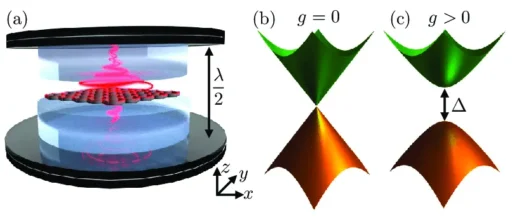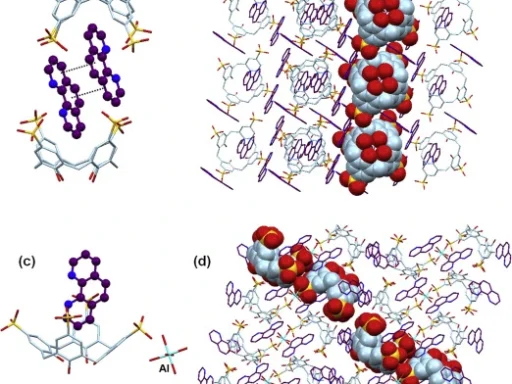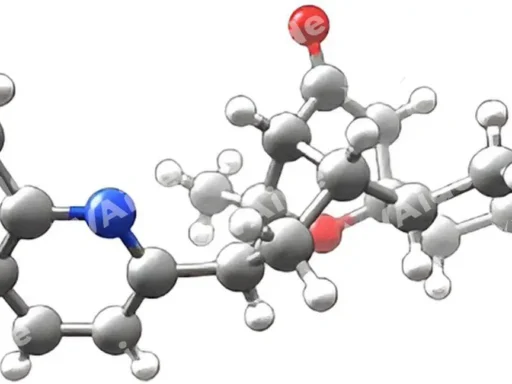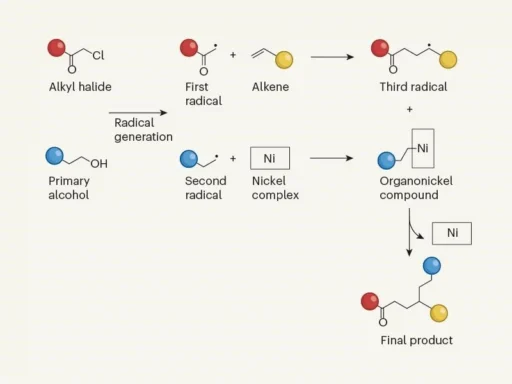Table of Contents
In the field of photonics, the incorporation of chiral components has brought about a new era of technological progress. One significant accomplishment is the creation of 2D chiral microcavities based on the concept of apparent circular dichroism (ACD). This comprehensive study thoroughly examines this state-of-the-art technology, covering its theoretical background, intricate design, manufacturing methods, wide-ranging applications, future potential, and related obstacles.
Opening statement:
To begin exploring the world of 2D chiral microcavities, it is crucial to understand the fundamental principles of chirality and microcavities. In photonics, chirality, defined as an item’s lack of symmetry that prevents overlap with its mirror image, holds significant importance. Manufactured structures known as microcavities restrict light within a very small volume. This confinement of light enhances interactions between light and matter and enables a wide range of optical phenomena.

Comprehending the concept of chirality:
Chirality, which is found everywhere in nature, is evident in several domains, such as molecules, crystals, and biological systems. The ubiquitous influence of this phenomenon spans diverse scientific areas, including chemistry, biology, materials science, and photonics. Chiral structures in photonics possess unique optical characteristics, including the ability to selectively absorb light and generate circular polarization. As a result, they play a crucial role in various optical devices and systems.
Explaining Microcavities:
Microcavities are structures that confine light within a small volume, often on the order of micrometers. Various applications, including optical sensors and lasers, use them.
Microcavities, known for their capacity to restrict light inside a limited space, are a fundamental element of contemporary photonics. These highly complex structures are available in different shapes, including Fabry-Perot cavities, whispering gallery mode resonators, and photonic crystal cavities, among others. Their wide range of applications includes lasers, optical filters, sensors, and quantum information processing.
The concept of apparent circular dichroism (ACD):
The concept of apparent circular dichroism (ACD) arises from the interaction between light and chiral structures, particularly at the intersection of chirality and microcavities. In ACD, light is unevenly sent through a chiral cavity. This causes visible optical reactions that are marked by the uneven absorption of left and right circularly polarized light. This phenomenon serves as the foundation for the establishment of 2D chiral microcavities, providing a platform for advanced photonics research and development.
Development and Construction of a Two-Dimensional Chiral Microcavity:
The development of 2D chiral microcavities requires careful design and accurate production techniques. Scientists manipulate planar microcavity structures to incorporate chiral components using lithography techniques, resulting in distinct optical characteristics. The manufacturing process utilizes materials with significant chirality, like certain polymers or nanostructures, to achieve the desired optical reactions and functions.

Utilization of 2D Chiral Microcavities:
The incorporation of two-dimensional chiral microcavities gives rise to a wide range of applications in several technological fields. These microcavities are useful in:
a). Optical filters :
Optical filters provide the ability to adjust the spectrum responses and improve filtering capabilities.
b). Sensing platforms:
Sensing platforms increase sensitivity to detect biomolecules, contaminants, and other analytes.
c). Quantum information processing :
Quantum information processing involves utilizing the distinct characteristics of chiral photons to facilitate quantum communication, cryptography, and computation, hence driving progress in quantum technology.

Future Opportunities and Challenges:
Various problems hinder the broad acceptance and realization of 2D chiral microcavities’ full capabilities, despite their immense potential. These challenges include:
Improving Fabrication Techniques: Developing new methods of fabrication to reach greater levels of chiral resolution and accuracy.
Optimal Cavity Design: Customizing cavity designs for individual applications and maximizing their performance parameters.
Researching innovative materials: Examining novel substances with customized chiroptical characteristics to broaden the range of possible designs and improve the capabilities of devices.
Although there are obstacles, the outlook for chiral photonics is optimistic since it can bring about significant advancements in various areas like quantum technologies, biosensing, and telecommunications.
In conclusion:
To summarize, the creation of 2D chiral microcavities via apparent circular dichroism marks the beginning of a new period of advancement in the field of photonics. Researchers have created a platform that combines the principles of chirality and microcavity optics. This platform has multiple uses and significant consequences for various technological fields. As research in this rapidly growing sector continues, we expect more breakthroughs that will completely transform photonics technology and push humanity toward a future characterized by unparalleled levels of technological complexity and capability.
Frequently Asked Questions:
1). Chirality plays a crucial function in photonics and holds substantial importance?
Chirality plays a significant role in the way light and matter interact, leading to distinct optical phenomena that are essential for a range of photonics applications, such as specific light absorption and circular polarization.
2). What is the process for fabricating 2D chiral microcavities, and what are the main techniques used in this fabrication?
The process of creating 2D chiral microcavities requires the careful design of chiral components within flat microcavity structures, utilizing methods like lithography and the deposition of chiral materials.
3). The main uses of 2D chiral microcavities, as well as their contributions to technological progress, are of interest.
Optical filters, sensor platforms, and quantum information processing all use microcavities. They provide adjustable spectral responses, improved sensing capacities, and new possibilities for quantum technologies.
4). The main obstacles impeding the extensive use of 2D chiral microcavities, as well as the approaches taken by researchers to overcome them, are of interest.
The challenges include improving fabrication techniques to obtain higher chiral resolutions, fine-tuning cavity designs for specific applications, and investigating new materials with customized chiroptical properties.
5). What is the influence of 2D chiral microcavities on future technologies, and which study areas demonstrate potential for additional progress?
2D chiral microcavities have the potential to bring about significant breakthroughs in quantum communication, biosensing, and optical computing. This could lead to the development of revolutionary photonics technologies that will greatly impact numerous technical fields.
For more chemistry blogs, visit chemistry Master





